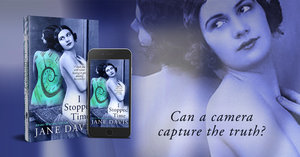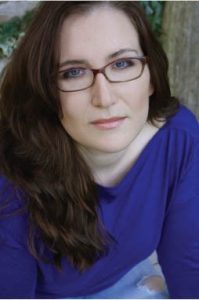Today, I’m delighted to welcome Kat Michels to Virtual Book Club, my interview series which gives authors the opportunity to pitch their novels to your book club.
Kat lives in Los Angeles, CA, with her two puggles. She is the author of a historical fiction novel, three children’s book, and a series of mini-biographies about extraordinary American women. Kat has received multiple awards for her writing, including two regional Emmys for her work on short-form documentaries.
Photo credit: A Sutton
Wife, mother, spy. Anna is hiding a dangerous secret from her family, especially her Confederate General husband. However, it is not her covert work for the Union that she finds the most daunting, it is dealing with her spoiled Southern belle daughter. When Kady discovers that her mother has been leading a carefully constructed double life, she must choose whether to work by her mother’s side in the shadows or return to the pampered life of a Southern planter’s daughter.
Cast into the bloody fray of one of the deadliest wars in our history, In a Time Never Known is the story of women who courageously defy the expectations of the era to do unprecedented things, altering the course of American history and their own lives.
Q: Welcome, Kat. Can I start by asking what it is about In A Time Never Known that you feel makes it particularly suitable for book clubs?
In a Time Never Known is perfect for book clubs, and I say that not from an author’s bias, but from experience. As part of my writing process, I hosted a book club. Every two weeks a group of women came over to my house, read two chapters out loud and then discussed. I listened, took notes and did the necessary rewrites to get to the final product that is published. It was an invaluable exercise, but what surprised me the most, was how much fun they had discussing this novel. There are enough fully-realised characters that every person had someone to whom she related despite the varying personalities in the room. In addition, this novel lives in the grey area between the absolutes of black and white. As Anna says, “Who is to say what is proper and what is not proper? We have never known a time like this, and as such we must adopt actions that we never before would have thought possible.” Between the action scenes, the intrigue, the love affairs and the relationships between the characters, you won’t run out of things to discuss. There are several chapters that my book club ladies are still talking about.
Q: Did you know where this book was going to go right from the start?
I actually had the final chapter of the book written months before the first chapter. I didn’t write chronologically, and as I knew from the very beginning where I was going in the story, almost all of my earliest writing can be found at the end of the book. The end was easy, figuring out how to get there was the hard part.

Click here to look inside or buy
Q: Where is the book set and how did you decide on its setting?
The book is set primarily in Virginia, with a few excursions down to North Carolina and one chapter in New York. I knew from the beginning that my spies needed to be in Virginia so they could be at the heart of the Confederate world. Richmond was an obvious choice, since it was the capital, as was placing the Bell Plantation on the James River, since it was advantageous for large plantations to be near waterways. What I was dreading was finding an appropriate location where Captain Henry could make his base camp. I knew it had to be some place inhospitable, hard to navigate, and large. By the time I sat down to dig into maps of Virginia and the surrounding area I was sure that there wouldn’t be anywhere in real life that would match what I needed, which would force me to rework my entire story. Then within five minutes of looking, I discovered the Dismal Swamp. Not only is there a frickin’ swamp in Virginia, but it has this amazingly rich history. I couldn’t believe it, it matched all of my criteria and had the history to back up how I wanted to use it in the story. I was so excited! I walked around for weeks telling everyone all about the Dismal Swamp. And the best part about the whole thing? It’s actually called the Dismal Swamp! I couldn’t have come up with a better name if I had tried. Sometimes things have a way of falling into place, and this was definitely one of them.
Q: Was your novel inspired by any real life events? And, if so, how to do deal with the responsibility that comes with this?
This entire novel was inspired by a series of real life events that I pieced together and then filled the holes with fiction. Some of the most fantastic parts of the book come straight out of history. For me, the only way to deal with that responsibility was to do as much research as I could so that I could accurately represent the people and the circumstances to the best of my ability. I read about the Civil War from a national perspective, from an individual state’s perspective, and from the generals’ perspectives. I read about life in the 1800s from as many viewpoints as I could find – rich/poor, female/male, owned/owner, north/south. I researched clothing, slang, common phrases, traditions, food, transportation, and even how the Civil War changed the ritual of dying. The more I knew, the more accurate I could make my story, and the more comfortable I felt using real-life events and people.
Q: How did you go about incorporating real-life characters in your novel?
I have characters that are real-life people (red), characters based on real-life people (purple), and then characters that are completely of my own invention (blue). I labelled each group with a colour so that I could keep track of them more easily. From the beginning I knew that I wanted to stay as historically accurate as possible. So any time I used a red character, I would mark that chapter so that during revisions I knew I couldn’t change the time or the place. If I needed Longstreet or Grant in a chapter, I made sure my purple and blue characters were in the correct place to meet the red character. I also did research on each of the red characters in an attempt to get a feel for who they were and their mannerisms. General Grant habitually chewed on his cigars, so when we meet Grant, he chews on his cigar. The Polybius Square that Elizabeth Van Lew used to code her messages is in a museum, so I used that table for my Union spies. I tried to incorporate things like that wherever I could. My female spies are the purple characters. I have done a lot of research and written about the female spies that operated during the Civil War. However, with the exception of Van Lew, Rose Greenhow, Belle Boyd, and maybe a couple of others, there isn’t a lot known about these women. So I pulled bits and pieces from their accounts to create my fictional spies.
Q: Do you have any other techniques for keeping track of your fictional canvas?
Spreadsheets, large quantities of colour-coded spreadsheets. Then throughout the process I used other visual tools as well. At one point I had a map that showed every Civil War battle, and its casualties, hung up in my kitchen. I had a timeline hung up in my living room that listed every major event of the war including location, generals involved, and which side came out on top. My favourite was when I created a notecard for each chapter, color-coded for each character and any deaths, and pinned them all to the wall. My roommate came home while I was standing in front of it frazzled, trying to add in new cards to help fill holes in the plot, and she watched me for a moment before commenting, “I see we’ve gone full-on conspiracy theorist.” I blinked at her a couple of times, confused, before I looked back at the wall and realised that all I was missing was some string and I would have looked exactly like the crazy conspiracy theorists in movies trying to piece together all of the players in some nefarious deed.

Q: The key trick in writing historical fiction is transporting readers to another time and place without overloading them with historical information. So how much detail is too much?
I have this bad habit of assuming that people are as educated about any particular topic as I am. If we’re talking about something like, cheese, I’m probably right. However, if we’re talking about the Civil War, a conflict that I’ve studied for over seven years, I am probably wrong. I was constantly reminded of this during book club when I would do something like, identify what side a soldier was fighting on by saying that he was wearing a belt buckle with “CS” on it. To me, that clearly indicated that he was a soldier for the Confederate States. However, my book club, composed of intelligent women, all looked at me like I was nuts that I thought it was obvious. Apparently high school history classes didn’t go over Civil War belt buckles. Go figure? So I pretty much started with bare bones, and then every time I had to explain a historical reference to a reader, I beefed up the history in that section. I also realized that the truth is often completely unbelievable unless you include the historical information to back it up. After having to explain multiple times that there are actually canals in the Dismal Swamp, and that it was in fact George Washington who helped put them there, it occurred to me that I would not be there to explain this to every reader, so I better put the explanation in the text – even though that little bit of trivia has nothing to do with my story. To paraphrase Mark Twain, truth is easier than fiction. Fiction has to make sense.
Q: Was there ever a moment when you felt the story started telling you?
Definitely. There were moments in every storyline where I would finish a chapter and realise that it was completely different from what I had intended to write, yet so much better than my original plan. There was one character in particular that this happened with a lot. No matter what I threw at Jacob, he would always come out on top. He’s just one of those characters that can see where he will benefit in every situation he’s faced with. In early drafts I fought against that, because I wanted him to have some sort of comeuppance. It never worked, and I just wound up with chapters that felt false. Eventually I gave in and let Jacob be Jacob.
Q: Hilary Mantel says that women writers must stop rewriting history to make their female characters falsely “empowered”. Part of this, she says, is the desire to give ‘a voice to those who have been silenced’, which fiction provides a perfect vehicle for. What is your reaction to this?
I have to agree with Hilary Mantel. I, like so many others, do yearn to give ‘a voice to those who have been silenced,’ but, I don’t feel that you have to, or should, do that at the expense of historical accuracy. There are women throughout history who fought back against the oppression of their sex, and who stood up to fight for what they believed in – in other words, empowered women. Each and every one of these women also suffered the consequences of their time for their actions. Fannie Lou Hamer was severely beaten. Mary Harris Jones was labelled the most dangerous woman in America. Margaret Sanger was accused of perverting womanhood and jailed. Women who stood up were called names, threatened, disowned, and killed. So in my mind, the inclusion of empowered women in historical fiction, without the subsequent consequences of their actions, belittles the memories and legacies of the brave women who actually did those very things and paid the price. There are plenty of real-life empowered women in history, you just have to look for them.

Q: Do you believe that you write the book you want to read?
Absolutely. I love history and historical fiction, but there are only so many books/stories about the deeds of white men that you can read, before you start yearning for a different perspective. I wrote from a different perspective.
You can find out more about Kat and her work on her website, on Facebook, on Twitter @FictionofTruth, on Goodreads and on Instagram @KatMichels.
She is prepared to attend book club meetings by Skype.
Remember, if you enjoyed this post please share it. If there’s anything else you’d like to ask Kat please leave a comment.
To have future posts delivered directly to your in-box, visit the sidebar on the right and subscribe to my blog, or to find out about new releases, competitions and freebies, subscribe to my newsletter and grab your free copy of my novel, I Stopped Time.

My January Sale!
From 1 – 8 Jan, you can discover outstanding stand-alone fiction from Jane Davis for only 99c/99p! Author.to/JaneDavisAuthorPage


